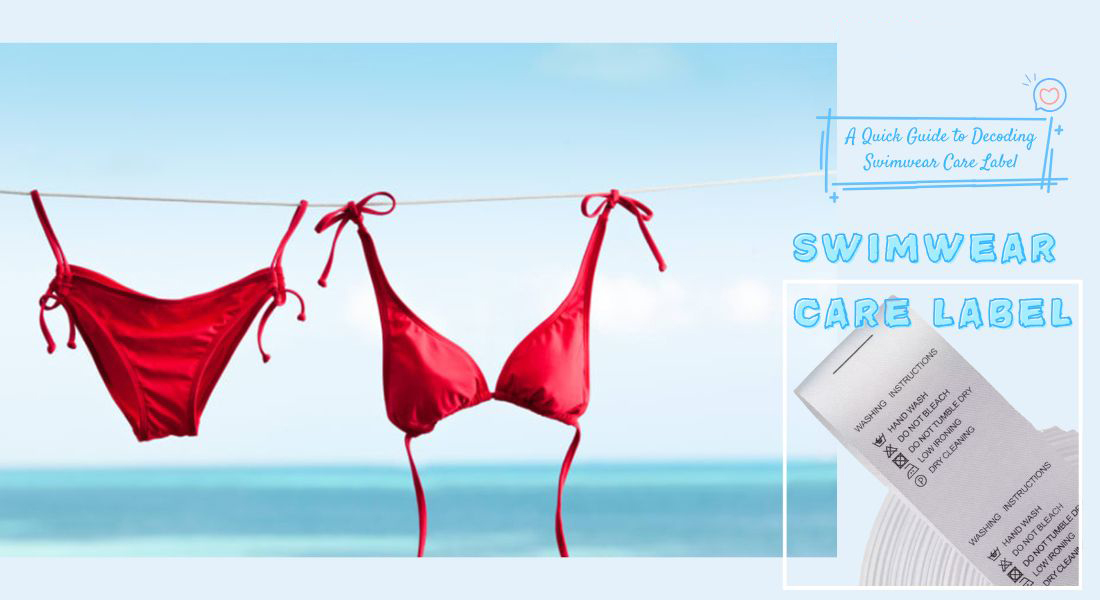Content Menu
● Introduction
● Understanding Swimwear Care Labels
>> Why Care Labels Matter
>> Decoding Common Care Label Symbols
● How to Wash Your Swimsuit According to Its Label
>> Case 1: "Hand Wash Only"
>> Case 2: "Machine Washable"
>> When the Care Label Is Missing
● Expert Tips for Swimsuit Care
>> Rinse After Every Use
>> Use Gentle Detergents
>> Never Use Bleach or Fabric Softener
>> Air Dry Properly
>> Storing Swimwear
● Advanced Care Strategies for Premium Swimwear
>> Pretreating: Lock in Color
>> Combatting Stubborn Residue
>> Shower Before Swimming
● Pro Tips for Swimwear Care
● Frequently Asked Questions
>> 1. How often should I wash my swimsuit?
>> 2. Can I ever put my swimsuit in the dryer?
>> 3. What's the best detergent for swimwear?
>> 4. My care label is missing—what do I do?
>> 5. Can I iron my swimsuit to remove wrinkles?
>> 6. Are eco-friendly swimsuits cared for differently?
>> 7. Why do manufacturers insist on including care labels?
● Conclusion
● Citations:
How to Read Your Swimsuit's Care Label: The Ultimate Guide to Lasting Swimwear
Introduction
Every swimsuit is more than just a stylish ensemble—it's a technical garment engineered to withstand chlorine, salt water, UV rays, and repeated wear. Yet, its longevity heavily depends on how it's cared for. At the heart of proper swimwear care is a small, often overlooked sewing—your swimsuit's care label. This label is your passport to making your favorite beach attire last for years.[1][2][3]

Understanding Swimwear Care Labels
Why Care Labels Matter
Swimwear manufacturers spend time choosing fabrics like spandex, nylon, polyester, or eco-friendly fibers, and each responds differently to washing techniques, sunlight, and chemicals. The care label offers manufacturer-tested guidance to preserve colors, stretch, and overall durability. Ignoring the label leads to fading, stretching, loss of UV protection, or garment damage.[2][3][4][1]
Decoding Common Care Label Symbols
Care symbols on swimwear communicate key instructions at a glance. Here's a visual breakdown with explanations:
| Symbol | Meaning | Why It Matters for Swimwear | What to Do |
 | Hand Wash Only | Protects delicate elastic fibers from machine friction. | Use cold water and mild detergent; avoid scrubbing. |
 | Machine Washable (Delicate Cycle) | Only on a delicate cycle. | Use a mesh bag & cold delicate cycle if allowed. |
 | NO Bleach | Harsh chemicals fade colors & weaken fabric. | Stick to chlorine-free, mild detergents. |
 | NO Tumble Dry | Heat destroys fabric elasticity. | Always air dry. |
 | NO Dry Clean | Aggressive solvents can ruin swimwear. | Avoid dry-cleaning your swimsuit. |
 | NO Iron | Heat stretches and melts fibers. | Skip the iron! |
 | Hang Dry | Best for shape retention. | Always dry in the shade to maintain shape & color. |
How to Wash Your Swimsuit According to Its Label
Case 1: "Hand Wash Only"
Hand-washing is the safest method, especially for delicate blends and specialty swimsuits. Here's a detailed workflow:
1. Rinse Immediately: After swimming, rinse your swimsuit with cold water to remove chlorine or salt.[2][1]
2. Gentle Soak: Soak the suit for 5 minutes in cold water with a mild, swimwear-specific detergent.[3][2]
3. Light Clean: Press rather than scrub, carefully working soap through the fabric.[3][1]
4. Towel Dry: Place the suit between two towels, gently press out excess water (never wring).[1][2]
5. Shade Air Dry: Lay flat or hang in a well-ventilated, shaded area to dry. Sunlight fades colors and breaks down elastic fibers.[4][2][1]
Case 2: "Machine Washable"
Some modern swimwear is machine-washable—but only with precautions.
1. Turn Inside Out: Reduces friction and protects prints.[2][1]
2. Mesh Laundry Bag: Prevents snags and stretching.[4][1]
3. Cold, Delicate Cycle: Never use hot water or normal settings.[3][1]
4. Mild Detergent Only: Avoid fabric softeners and bleach.[1][2]
5. Skip Spin/Dryer: Air dry only; tumbling will quickly age the fabric.[2][1]
When the Care Label Is Missing
If your swimsuit lacks a readable label, the safest bet:
- Assume hand wash and cold water.
- Avoid bleach, heat, and dryers.
- Always air dry in the shade.[10][1]
Expert Tips for Swimsuit Care
Rinse After Every Use
Chlorine, salt, and sunscreen break down fibers, so always rinse swimwear after swimming—even if you didn't get wet. This reduces chemical residue and smell.[11][3][2]
Use Gentle Detergents
Detergents designed for delicate fabrics are ideal; they preserve stretch and color, extending swimwear life.[4][3]
Never Use Bleach or Fabric Softener
Bleach causes fading and fabric breakdown. Fabric softener leaves residues that compromise waterproofing.[3][1][2]
Air Dry Properly
Not only should you avoid dryers, but also direct sun exposure when air drying. Always dry in a shaded, ventilated space to maintain shape and color.[12][1][2]
Storing Swimwear
Store swimwear flat or rolled, and always in a cool, dry, shaded space. Damp storage encourages mold; folding or cramming leads to creases and shape loss.[4][3]
Advanced Care Strategies for Premium Swimwear
Pretreating: Lock in Color
Soak a new swimsuit in cold water with two tablespoons of vinegar for 30 minutes. This helps set color and protect against fading.[10][3]
Combatting Stubborn Residue
A cup of white vinegar in the rinse water removes chlorine smells and residue, maintaining fresh fabric.[10][2]
Shower Before Swimming
Wet the swimsuit in freshwater before swimming; dry suits absorb more pool and ocean chemicals, leading to faster deterioration.[3]
Pro Tips for Swimwear Care
- Rinse Immediately: After swimming, rinse your swimsuit in cold water to remove chlorine or saltwater.
- Avoid Sitting on Rough Surfaces: This can cause pilling and damage to the fabric.
- Rotate Your Swimsuits: If you swim frequently, consider having multiple swimsuits to reduce wear and tear.
- Store Properly: Avoid folding your swimsuit; instead, lay it flat or hang it to maintain its shape.
Frequently Asked Questions
1. How often should I wash my swimsuit?
Wash after every use, even if you didn't swim—it removes sweat, sunscreen, and contaminants.[2][3]
2. Can I ever put my swimsuit in the dryer?
No. High heat destroys elasticity and fades colors quickly. Always opt for air-drying in the shade.[12][1][2]
3. What's the best detergent for swimwear?
Choose mild, chlorine-free detergents or those made for delicates. Some brands offer swimwear-specific detergents to protect fibers and colors.[4][2][3]
4. My care label is missing—what do I do?
Hand wash in cold water, use gentle detergent, skip dryer and bleach, and always air dry.[10][1]
5. Can I iron my swimsuit to remove wrinkles?
Never iron swimwear. Heat damages spandex and elastic, permanently ruining the garment.[6][1][2]
6. Are eco-friendly swimsuits cared for differently?
Not significantly. Eco-friendly swimsuits still require gentle, label-based care—but often respond even worse to heat and harsh chemicals, so handle with extra caution.[13][1]
7. Why do manufacturers insist on including care labels?
Clear care labels minimize returns and customer complaints, and build brand trust by helping buyers get the most life out of each product.[1]
Conclusion
A swimsuit's longevity is directly tied to your care routine. By understanding and following the care instructions on the label, using the right detergents, and choosing proper drying and storage methods, swimmers can enjoy vibrant, comfortable swimwear season after season. Whether you own classic nylon one-pieces, trendy bikinis, or premium eco-friendly designs, the care label is your road map to lasting color, stretch, and style. Make label reading a habit—your swimsuits will thank you![1][4][2][3]
Citations:
[1](https://www.unijoyswimwear.com/do-you-know-how-to-read-your-swimsuits-care-label/)
[2](https://www.bikinivillage.com/us/blog/how-to-care-for-your-swimsuit-the-complete-detailed-guide)
[3](https://www.lulus.com/blog/fashion/5-expert-swimwear-care-tips-to-make-your-bathing-suits-last-longer/)
[4](https://www.realsimple.com/beauty-fashion/clothing-care/how-to-care-for-swimsuit)
[5](https://www.love2laundry.com/blog/the-inforgraphic-guide-to-laundry-symbols/)
[6](https://hallak.com/care-symbol-dictionary/)
[7](https://fcs.tennessee.edu/wp-content/uploads/sites/23/2021/08/care-symbols.pdf)
[8](https://stock.adobe.com/search?k=laundry+symbols)
[9](https://www.youtube.com/watch?v=I8mIQVNCz94)
[10](https://www.sauipeswim.com/blogs/journal/how-to-wash-swimsuits-and-other-swimwear-care-tips)
[11](https://www.instagram.com/reel/DNjY7DSSAS0/)
[12](https://www.billabong.com/blogs/expert-guides/bikini-care-guide)
[13](https://www.thelaundress.com/blogs/tips/how-to-care-for-swimwear)
[14](https://creators.yahoo.com/lifestyle/story/laundry-symbols-decoded---what-those-tiny-icons-really-mean-170523719.html)
[15](https://www.ihateironing.com/blog/laundry-symbols-explained/)
[16](https://www.youtube.com/watch?v=EhN_B2PF-aI)
[17](https://www.cleaninginstitute.org/cleaning-tips/clothes/laundry-basics)
[18](https://www.youtube.com/watch?v=inpcJZwcJSQ)
[19](https://www.youtube.com/watch?v=tPYtvdlwUy0)
[20](https://www.rinse.com/blog/care/swimwear-101-how-care-your-swimsuits/)







































































